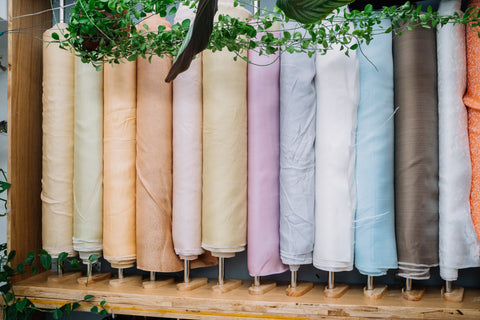July 12, 2021 0 Comments
How many of you have ever stopped yourself from buying something because the price was too high? 71% of you said YES from our Instagram poll. We've all been there at some point in our lifetime!
As a society, we’re conditioned to believe that clothing is inexpensive, as the fast-fashion industry has made us feel it’s “normal” and fair to buy a tee for the same price as your coffee. Often the price of sustainable fashion is questioned because we're not used to paying "higher" amounts for clothing. However what is the true cost of fashion and why does it cost more? Let's start by identifying what makes our clothing more sustainable?
Sustainable fashion refers to clothing that has been sustainably manufactured, taking into account both:
1) Carbon emissions throughout the supply chain
2) Industry and garment workers
As Lucy Siegle says in The True Cost, “Fast fashion isn’t free. Someone, somewhere is paying.”
Today, we're sharing the facts on WHY sustainable fashion costs more.
Disclaimer: this blog post exemplifies some not all reasons which determine the true cost of fashion.
Let's get started!
1) Cost of Materials "Better quality comes at a better price".
The entire supply chain to produce sustainable fabrics costs more.
From ethically and/or growing organic plants, producing them into quality yarn and then fabric, to non-toxic dyes and production, etc. This entire process costs more.
Good quality often means more durable garments that are made to last, so you can get many wears for years to come.

2) Labour "Sustainable fashion brands pay fair".
Did you know only 2% of garment workers globally earn a livable wage? (Fashion Revolution)
Something I say all the time is this - a brand cannot be deemed as sustainable if their garment workers are not earning a fair wage and working in ethical conditions. They must co-exist in order to be a conscious fashion brand.
Ethical brands treat their garments workers fairly, with dignity and pay livable wages - all these essential practices contribute to larges costs and therefore increasing the retail price of fashion.
In contrast, fast fashion brands are known for their unsafe working conditions. These companies exploit their workers and often pay only minimum wage, which is less than the livable wage.

3) Economies of Sale "It's more expensive to make fewer pieces".
Fast fashion brands can price lower by producing in immense quantities at a low cost. This enables them to offer new styles every week and still make profit.
Sustainable brands often will have smaller size runs, aka fewer pieces available and/or have season-less collections with a longer sale timeline.

4) Certifications "Establish ethical standards".
Certifications establish standards between brands and their company practices, building consumer trust.
Companies that incorporate sustainable and fair production have the option to apply for certifications such as OEKO-Tex, Fairtrade, BCorp, Blue Sign, etc.
Keep in mind that brands have to pay for most certifications, increasing the overhead, which increases the final cost of the fashion pieces. For example the starting annual fee for Certified B Corporation is $1000, and increases with revenue. 
We hope this breakdown gives you insight around the true cost of sustainable fashion. Let us know below what might have resonated with you most.
- Team Shopwise
Sources: Ecocult, Fashion Revolution, The True Cost
November 23, 2022 0 Comments
A month ago we hosted our first pop-up. Over a two day weekend on Queen West in Toronto, we brought together 15 sustainable brands and vendors, all woman owned and welcomed 100s of you through our doors.
May 25, 2022 0 Comments
January 14, 2022 0 Comments

WELCOME TO SHOPWISE!
Join our email community and sign up for sustainability tips, exclusive discounts and company updates!

